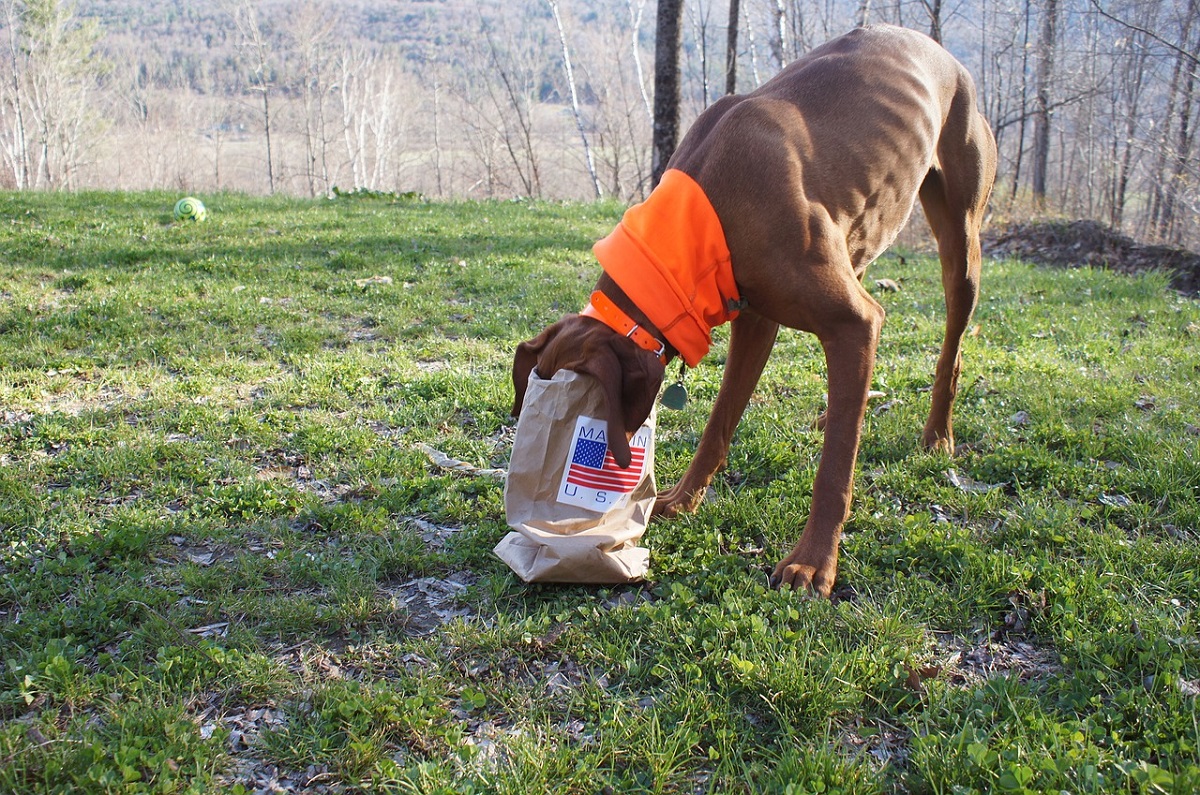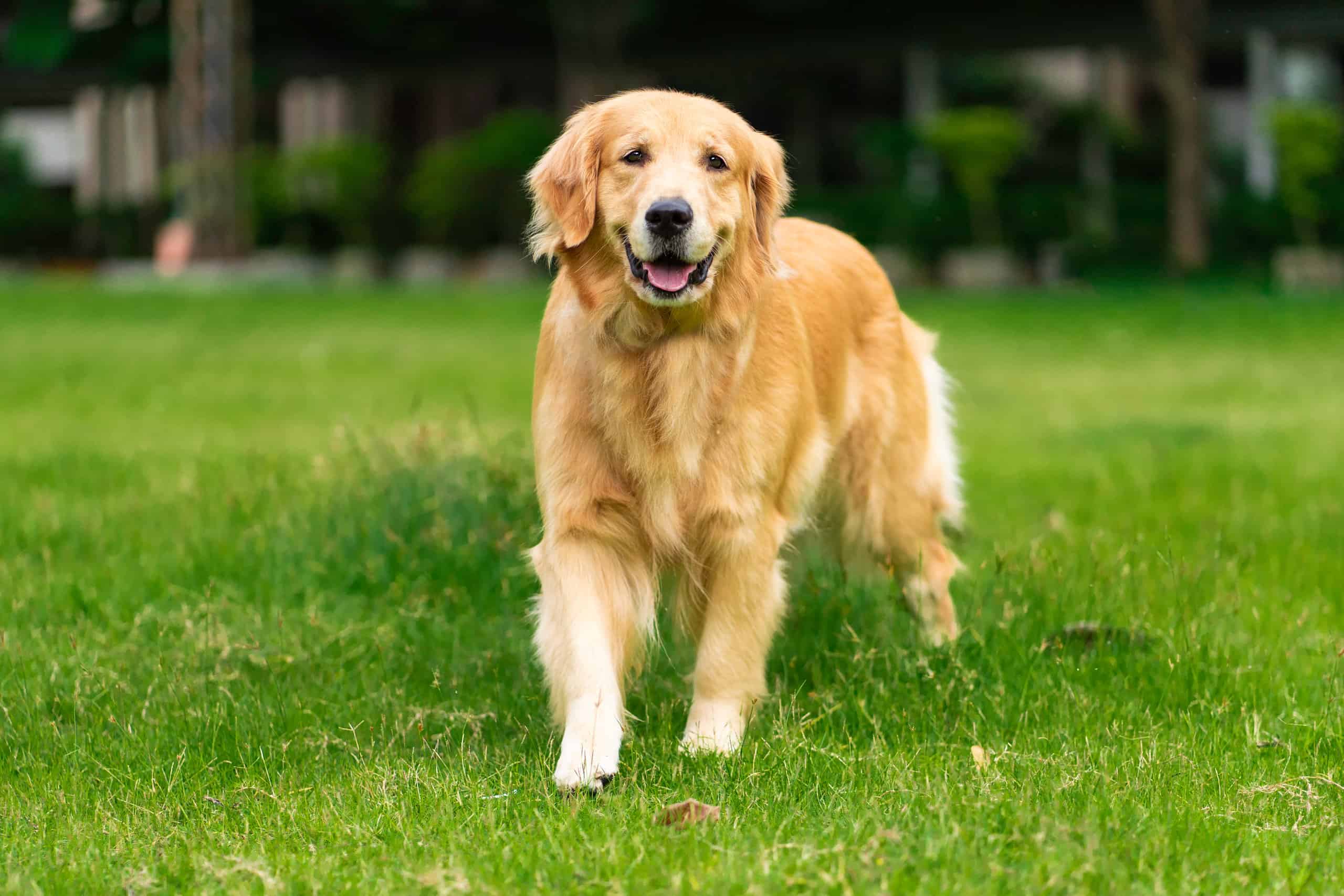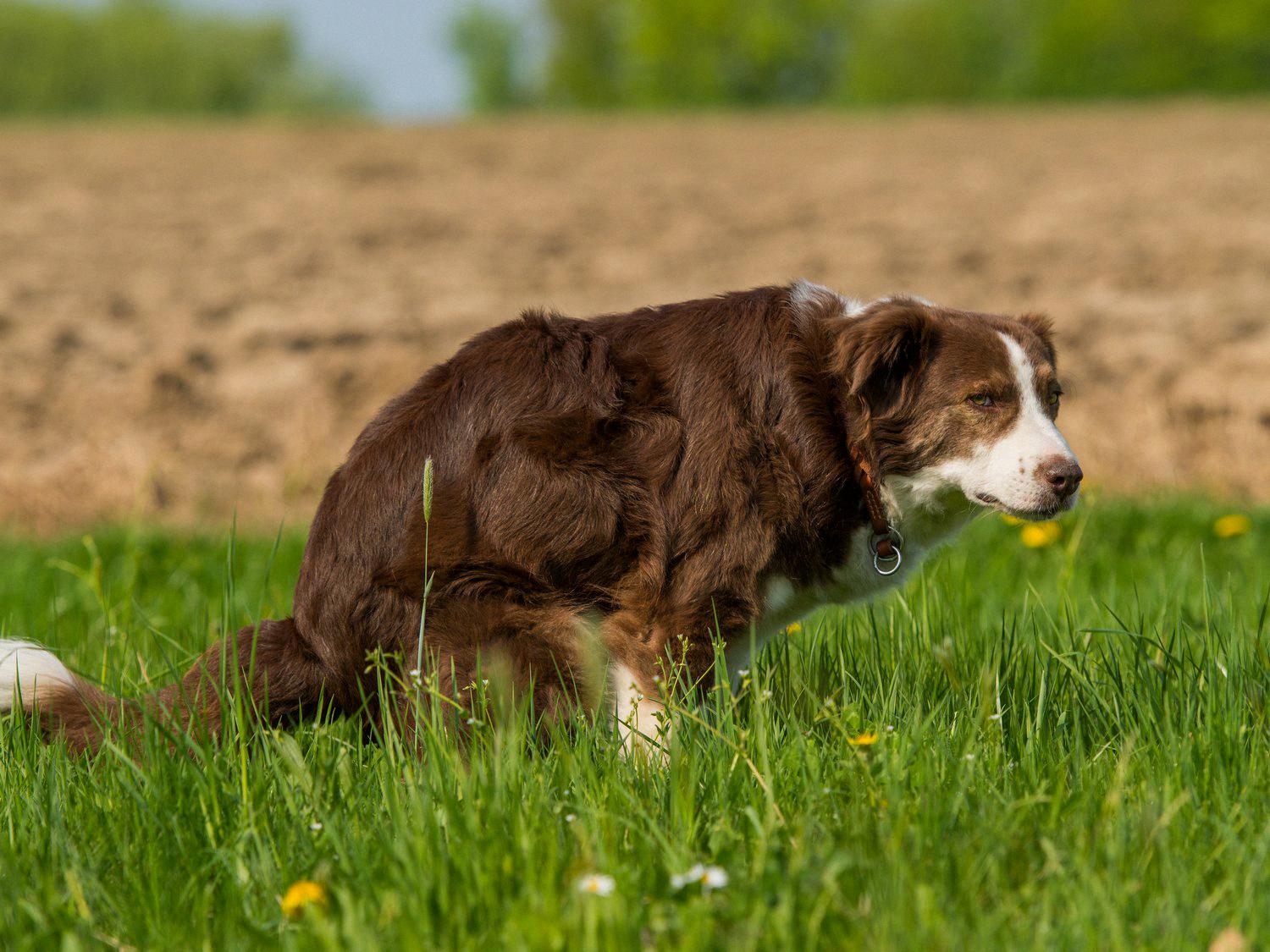

FAQs
How Often Should Dogs Fart
Modified: August 5, 2023
Learn about general questions related to dogs farting and discover how often it is considered normal in this informative guide.
(Many of the links in this article redirect to a specific reviewed product. Your purchase of these products through affiliate links helps to generate commission for Under-tec.com, at no extra cost. Learn more)
Table of Contents
Introduction
Let’s face it, no matter how cute and lovable our furry friends are, sometimes they can produce some rather unpleasant odors. Yes, we’re talking about dog farts! It’s a natural bodily function that can leave us gagging and wondering just how often our dogs should be letting one rip.
Before we delve into the frequency of dog farting, it’s important to understand the basic anatomy behind it. Dogs, much like humans, have a complex digestive system that breaks down food and releases gas during the process. This gas can build up and escape through the rectum, resulting in a fart.
While flatulence is a normal occurrence for dogs, excessive or frequent farting can be a cause for concern. Several factors contribute to dog farting, including diet, digestive health, and even breed characteristics. By understanding these factors, we can determine what is considered normal and when it might be time to seek veterinary assistance.
In this article, we will explore the various factors that contribute to dog farting, the normal frequency of dog farting, tips to reduce dog farting, and when it is appropriate to seek veterinary assistance. By the end, you’ll have a better understanding of whether your dog’s flatulence is just a natural part of their digestive process or if it requires further attention.
The Anatomy of Dog Farting
To truly grasp why dogs fart, it’s essential to understand the intricate anatomy of their digestive system. The process of farting, scientifically known as flatulence, begins in the stomach and ends through the rectum.
When a dog eats, the food travels down the esophagus and enters the stomach, where it is broken down into smaller particles through the secretion of stomach acids and enzymes. From there, the partially digested food, also known as chyme, passes into the small intestine.
In the small intestine, the chyme is further broken down and nutrients are absorbed into the bloodstream. This process releases small amounts of gas as a natural byproduct. As the chyme progresses into the large intestine, more gas is produced by the fermentation of undigested carbohydrates and fibers by beneficial gut bacteria.
The large intestine is where the majority of the gas accumulates. From there, the gas travels through the colon and rectum before eventually being expelled through the anus in the form of a fart.
It’s worth noting that different dog breeds have varying digestive systems, which can affect the frequency and intensity of farting. For example, brachycephalic breeds, such as Bulldogs and Pugs, have shorter and more compacted digestive tracts, leading to a greater likelihood of gas buildup and subsequent farting.
Additionally, the size of the dog can also play a role. Larger dogs tend to have more spacious digestive systems, allowing gas to disperse and escape more easily. In contrast, smaller dogs may experience more audible and potent farts due to the compressed nature of their digestive tracts.
Overall, dog farting is a natural process that occurs as a result of digestion. Understanding the anatomy behind it can help us determine what is considered normal and identify any abnormal occurrences that may require attention.
Factors That Contribute to Dog Farting
When it comes to dog farting, there are several factors that can contribute to the frequency and intensity of the flatulence. These factors can vary from one dog to another, and understanding them can help us better manage and address the issue.
1. Diet: The food dogs consume plays a significant role in their digestive health and gas production. Certain types of food, such as those high in fiber or poorly digestible carbohydrates, can lead to increased gas production. Also, dogs that consume their food too quickly may swallow excess air, leading to more farting.
2. Food allergies or sensitivities: Just like humans, dogs can have food allergies or sensitivities that can cause gastrointestinal distress and increased gas. Common allergens include grains, dairy, and certain proteins. If you suspect your dog has food allergies, it’s best to consult with a veterinarian to determine the best diet for them.
3. Swallowed air: Dogs who gulp their food, eat too quickly, or have a habit of scavenging may ingest more air, leading to increased flatulence. It’s important to encourage slower eating habits and prevent dogs from ingesting non-food items that can contribute to excess gas.
4. Inadequate digestion: Dogs with digestive issues, such as a lack of digestive enzymes or imbalanced gut bacteria, may have difficulty breaking down food properly. This can result in undigested carbohydrates fermenting in the gut, leading to increased gas production and flatulence.
5. Medical conditions: In some cases, excessive farting can be a sign of an underlying medical condition. Intestinal parasites, pancreatitis, inflammatory bowel disease, and gastrointestinal blockages can all contribute to increased flatulence. If your dog’s farting is accompanied by other symptoms like diarrhea, vomiting, or a change in appetite, it’s crucial to seek veterinary assistance.
Understanding the factors that contribute to dog farting can help us identify any potential issues and make necessary adjustments to alleviate discomfort. By addressing diet, promoting healthy eating habits, and seeking veterinary guidance when needed, we can reduce excessive flatulence and provide our furry friends with a more comfortable and gas-free existence.
Normal Frequency of Dog Farting
When it comes to determining what is considered a normal frequency of dog farting, there is no one-size-fits-all answer. Just like humans, dogs can vary in their gas production and farting habits. However, there are some general guidelines to help you gauge whether your dog’s flatulence is within the normal range.
1. Occasional farting: It’s entirely normal for dogs to fart occasionally. If you notice your dog passing gas a few times a day or every few days, and there are no other concerning symptoms, it’s likely nothing to worry about. Gas is a natural byproduct of the digestive process, and occasional farting is simply a way for your dog’s body to release excess gas.
2. Mild odor and noise: Normal dog farts are typically mild-smelling and relatively quiet. If your dog’s flatulence has a strong, foul odor or is excessively loud, it may indicate a dietary issue or underlying medical condition that should be addressed.
3. No accompanying symptoms: If your dog’s farting is not accompanied by other symptoms such as diarrhea, vomiting, abdominal pain, or a change in appetite or behavior, it is generally considered within the normal range. However, if you notice any additional worrisome signs, it is best to consult with a veterinarian.
4. Consistency: While the frequency of dog farting can vary, it’s essential to monitor your dog’s farting habits for consistency. If you notice a sudden and significant increase in farting, it may warrant further investigation to rule out any digestive issues or food intolerances.
Remember, every dog is unique, and what may be considered normal for one dog may not be the same for another. It’s essential to keep an eye on your dog’s farting habits, assess the overall health and well-being, and make adjustments as necessary. If you have any concerns about your dog’s flatulence, it’s always best to consult with a veterinarian for a professional evaluation and guidance.
Abnormal Frequency of Dog Farting
While occasional farting is normal for dogs, an abnormal frequency of farting may indicate an underlying issue that requires attention. Here are some signs to look out for, which may indicate that your dog’s farting is outside the realm of what is considered normal:
1. Excessive farting: If your dog is passing gas frequently throughout the day, with no relief or reduction in frequency, it may be a cause for concern. Excessive farting could be a sign of a digestive problem, such as a food intolerance, inflammatory bowel disease, or pancreatic issues.
2. Foul-smelling gas: While dog farts may not always smell pleasant, an extremely strong and pungent odor can indicate a problem. Malodorous flatulence could be a result of a dietary imbalance, gastrointestinal infection, or even the presence of parasites.
3. Changes in farting patterns: If you notice a sudden increase or decrease in your dog’s farting, it may be a sign of an issue. A significant increase in farting could indicate a change in diet, while a decrease in farting may point to a blockage in the digestive system or decreased food intake.
4. Other gastrointestinal symptoms: Pay attention to any accompanying gastrointestinal symptoms, such as diarrhea, vomiting, bloating, or abdominal pain. If your dog exhibits any of these signs along with excessive farting, it could indicate a more serious underlying condition.
It’s important to note that factors such as breed, age, and overall health can influence the baseline for what is considered normal farting. However, if you notice any of the above abnormalities, it’s crucial to consult with a veterinarian. They will be able to perform a thorough examination, possibly including stool and blood tests, to identify the underlying cause of the abnormal farting and develop an appropriate treatment plan.
Remember, as pet owners, we know our dogs best. If you suspect that something is not right with your dog’s farting habits, it’s always better to err on the side of caution and consult with a veterinarian for proper evaluation and guidance.
Tips to Reduce Dog Farting
While farting is a natural bodily function for dogs, excessive or foul-smelling flatulence can be unpleasant for both you and your furry friend. Fortunately, there are several tips and strategies you can follow to help reduce dog farting:
1. Adjust the diet: The first step in managing dog farting is to evaluate your dog’s diet. Consider switching to a high-quality dog food that is easily digestible and free from common allergens like grains or certain proteins. Look for options that are specifically formulated for sensitive stomachs or for dogs with food sensitivities.
2. Slow down mealtime: Dogs that eat too quickly tend to swallow air along with their food, leading to increased flatulence. To prevent this, try using specialized slow-feeder bowls or food puzzles that encourage your dog to eat more slowly. Alternatively, you can divide their meals into smaller portions or add obstacles, like balls or food-dispensing toys, in their bowl to slow down the eating process.
3. Avoid table scraps: Resist the temptation to give your dog table scraps, as human food can be difficult for dogs to digest and may contribute to increased gas production. Stick to a consistent, balanced dog food diet and avoid feeding them scraps from your own plate to minimize potential digestive issues.
4. Introduce probiotics: Probiotics are beneficial bacteria that support a healthy gut flora. Adding a probiotic supplement to your dog’s diet can help improve digestion and reduce excessive gas production. Consult with your veterinarian to determine the right probiotic product and dosage for your dog’s specific needs.
5. Monitor treats and snacks: Just like their regular diet, the treats and snacks you give your dog can contribute to farting. Opt for natural, high-quality treats that are specifically designed for easy digestion. Be mindful of the ingredients list and look for treats that are free from fillers, artificial additives, and ingredients that may trigger food sensitivities.
6. Exercise and weight management: Regular exercise not only helps maintain your dog’s overall health but also aids in proper digestion. Engaging in regular physical activity can help regulate your dog’s bowel movements and reduce excessive gas accumulation. Additionally, maintaining a healthy weight for your dog can also contribute to better digestive health and less flatulence.
7. Consult with a veterinarian: If despite your efforts the excessive farting continues or is accompanied by other concerning symptoms, it’s best to seek the advice of a veterinarian. They can perform a thorough examination, discuss your dog’s specific circumstances, and may recommend further diagnostic tests or treatments to address the issue.
By employing these tips, you can help alleviate your dog’s flatulence issues and create a more pleasant environment for both of you. Remember, every dog is unique, and what works for one may not work for another. It may take some trial and error to find the most effective approach for managing your dog’s farting, but with patience and consistency, you can help reduce the frequency and intensity of their flatulence.
When to Seek Veterinary Assistance
While occasional farting is normal for dogs, there are times when it’s necessary to seek veterinary assistance if you notice concerning signs or symptoms. Here are some scenarios that warrant a visit to the veterinarian:
1. Persistent, excessive farting: If your dog is consistently passing gas at an unusually high frequency, it may indicate an underlying issue. Excessive gas production can be a sign of digestive problems, food allergies, or gastrointestinal infections that require professional evaluation and treatment.
2. Foul-smelling gas with other symptoms: If your dog’s flatulence has a strong, foul odor accompanied by additional symptoms such as diarrhea, vomiting, decreased appetite, or weight loss, it’s crucial to seek veterinary assistance. These signs may indicate an underlying gastrointestinal disorder or infection that needs prompt attention.
3. Change in behavior or appetite: If your dog’s farting is accompanied by a noticeable change in behavior, such as lethargy, restlessness, or discomfort, it’s important to consult a veterinarian. Similarly, a sudden loss of appetite or reluctance to eat can be indicative of an underlying health issue that needs to be evaluated.
4. Blood in the stool: If you observe blood in your dog’s stool, it is considered a serious symptom that requires immediate veterinary attention. Blood in the stool can be a sign of various gastrointestinal issues, including ulcers, infections, or even cancer.
5. Sudden onset of symptoms: If your dog’s farting habits change dramatically and occur suddenly, it may indicate a gastrointestinal blockage or an acute issue. In these cases, immediate veterinary care is necessary to prevent further complications.
6. Preexisting medical conditions: If your dog has preexisting medical conditions, such as pancreatitis, inflammatory bowel disease, or a gastrointestinal disorder, and their farting patterns change or become more severe, it is important to consult with a veterinarian. These conditions may require ongoing management and adjustments to the treatment plan.
Remember, as a pet owner, you know your dog best. If you sense that something is not right with your dog’s farting habits or notice any concerning signs or symptoms, it’s always better to err on the side of caution and seek veterinary assistance. A veterinarian will be able to conduct a thorough examination, run necessary tests, and provide appropriate treatment to address any underlying issues affecting your dog’s digestive health.
Conclusion
Understanding the frequency of dog farting and when it deviates from the norm is essential for every pet owner. Flatulence is a natural part of a dog’s digestive process, but excessive or malodorous farting can indicate underlying issues that require attention. By considering factors such as diet, digestive health, and any accompanying symptoms, we can better assess whether our dog’s flatulence is within the acceptable range or if veterinary assistance is needed.
Remember, every dog is unique, and what may be considered normal for one dog may not be the same for another. It’s important to monitor your dog’s farting habits and be aware of any changes or patterns. Proper diet, including high-quality and easily digestible food, along with slow feeding practices, can help reduce excessive flatulence. Adding probiotics and seeking veterinary advice can also assist in managing any digestive issues contributing to excessive farting.
If you notice persistent, excessive, or foul-smelling flatulence, or if your dog exhibits other concerning symptoms, such as diarrhea, vomiting, changes in behavior, or blood in the stool, it is imperative to seek veterinary assistance. A veterinarian can perform a thorough examination, diagnose any underlying health conditions, and provide appropriate treatment.
By being attentive to our dog’s farting habits, monitoring their diet, and seeking veterinary guidance when necessary, we can help maintain their overall digestive health and minimize the discomfort of excessive flatulence. Remember, a healthy and happy dog brings joy to our lives, even if they occasionally produce some not-so-pleasant odors!










